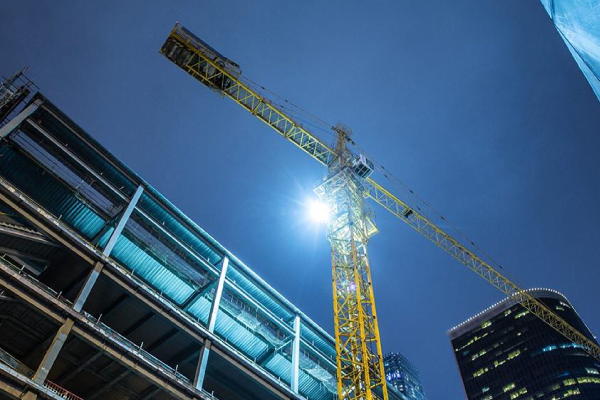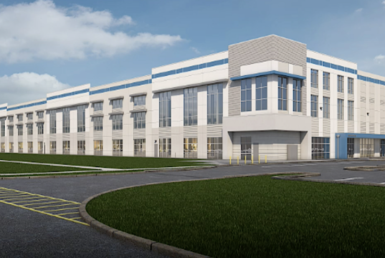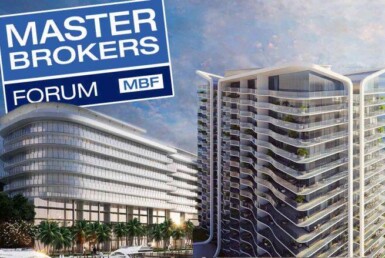North America’s biggest mall and entertainment center coming: American Dream Miami approved

Watch out, Orlando: Miami-Dade County is getting into the amusement park game.
The Miami-Dade County Commission voted 11-1 on Thursday to approve American Dream Miami, which would be the largest mall in North America and also include amusement park rides and the continent’s first indoor ski slope. The developer is Triple Five Group, owner of the Mall of America in Minnesota.
American Dream Miami was approved for 6.2 million square feet of retail and entertainment space plus 2,000 hotel rooms on a 194.5-acre site at the intersection of Florida’s Turnpike and Interstate 75. The applicant expects the project to attract 30 million visitors a year – more than Walt Disney World’s Magic Kingdom.
The county commission also approved 9-1 a mixed-use project by the Graham Cos. that would be just south of American Dream Miami.
The commission also passed 11-1 a resolution barring American Dream Miami from receiving taxpayer funding from the county, whether it be a tax break, bond, loan or tax increment financing. The developer could still seek state or federal subsidies.
“We all learn from mistakes,” Commissioner Rebeca Sosa said. “I will support this as long as there is no subsidy of any kind.”
The South Florida Taxpayer Alliance, an organization funded by mall owners Simon Property Group, GGP and Taubman Centers, had attorney Alex Heckler present the commission with an objection to American Dream Miami receiving any taxpayer funding. He noted that Triple Five Group received significant public subsidies for three of its other malls.
Don Ghermezian, a member of the family that owns Triple Five Group, said it’s a misnomer that American Dream Miami is a mega mall.
“We are not in the mall business,” he said.
Ghermezian said the American Dream Meadowlands project, which is under construction and expected to open in a year in New Jersey, is 75 percent leased with 55 percent of its space entertainment and the rest retail. He mentioned the water park branded by DreamWorks, the amusement park branded by Nickelodeon, and a Cirque du Soleil theater.
Ghermezian said the Miami project would have similar features, and improve on what makes the Mall of America successful.
“The amusement park is meant to compete with the best parks in the world,” he said. “There are so many things we are doing that are different and unique that are not a mall …. I’m looking to create an entertainment component and retail components that don’t exist in this market today.”
Dozens of county residents spoke in favor of American Dream Miami, with many looking forward to having a amusement park for their children nearby, instead of traveling to Orlando.
“Last year, we had 16 million overnight visitors. Orlando had 68 million tourists,” Miami-Dade Commissioner Dennis Moss said. “I ask the question: Why? Disney and the theme parks and Universal Studios.”
Many residents who spoke in opposition to American Dream Miami cited heavy traffic and the environmental impact. The traffic study said the project would generate 70,308 net new daily vehicle trips.
Miami-Dade Commissioner Daniella Levine Cava said she voted against the project because the traffic is not adequately mitigated, it undermines the plan for public transportation, and she wants to focus on creating skilled jobs.
Triple Five Group agreed to a series of roadway improvements, including four highway interchanges, that must be completed before the project opens. Attorney Miguel Diaz de la Portilla, who represents the developer, said this would cost about $210 million, and the developer would be responsible for paying. There would be an additional $58 million in impact fees for American Dream Miami.
The total project cost would exceed $4 billion, Diaz de la Portilla said.
Miami Lakes Mayor Manny Cid told commissioners he wanted all of those impact fees spent in northwestern Miami-Dade to help the communities near the project. He’s concerned that the east-west traffic through his city would be worse than the traffic study anticipates. However, the commission didn’t approve any such measure.
In order to address the need for public transportation to the project, the commission required dedicated transit lanes on numerous feeder roads. The commission also adopted a resolution urging the Florida Department of Transportation to allow the widening of Northwest 186th Street/Miami Gardens Drive from Northwest 57th Avenue west to the project in order to allow a dedicated transit lane from the project to the county’s proposed transit corridor on Northwest 27th Avenue.
Broward County officials dropped their opposition to American Dream Miami after the developer pledged to pay the county $650,000 for transportation improvements along Miramar Parkway near Interstate 75 and provide three bus bays at the mall for Broward County Transit. The developer also agreed to run a private shuttle from the mall to Miramar Town Center and a second location in south Broward to be determined later.
Miami-Dade County staff estimated American Dream Miami would generate 9,236 to 22,331 jobs. Diaz de la Portilla said the developer expects to create 25,000 jobs.
Triple Five Group promised to reach out to local businesses and the workforce to build and staff its project. The developer previously signed a deal with the county to provide 35 percent of both its architectural/engineering and construction jobs to local small businesses, and 65 percent of its employment to county residents.
“It’s about ensuring citizens of our communities have the opportunity for employment,” said Rick Beasley, executive director of CareerSource South Florida. “We are building pipelines for these particular jobs.”
Robert Weissert, executive VP and counsel to Florida TaxWatch, said the Mall of America didn’t actually boost employment in Minnesota because the jobs created on the property were offset by jobs lost to competition in other areas of the county, and he believes American Dream Miami would have a similar impact here. He spoke out against taxpayer subsidies for the project.
American Dream Miami would have 3.5 million square feet of retail, 1.5 million square feet of entertainment, 1.2 million square feet of back-of-house supporting space, and 2,000 hotel rooms. The maximum height would be 500 feet.
Now that the zoning for American Dream Miami has been approved, the developer must submit a site plan with a more specific plan for how the buildings would look.
Entertainment features at the project would include an indoor ski slope, a Ferris wheel, amusement park rides, a submarine that dives into an aquarium with a coral reef, ice rink, miniature golf, sports center for competitive games, movie theater, fishing lake and multiple performance venues.
“We look forward to the next step of this comprehensive application process and building an entertainment destination with attractions for families to enjoy and our community to be proud of,” Diaz de la Portilla said.
Meanwhile, the Graham Cos. project would have 3 million square feet of business and office, 1 million square feet of retail and 2,000 apartments. Hotel rooms could also be built in lieu of retail or business and office. The maximum height would be 30 stories.




